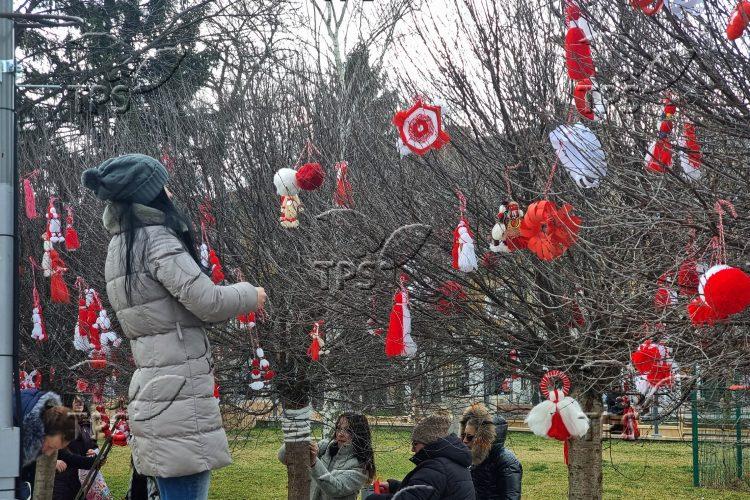Martenitsa: Bulgarians Celebrate Spring with Centuries-Old Tradition
Jerusalem, 1 March, 2023 (TPS) -- On March 1, Bulgarians celebrate a traditional festival marking the onset of spring. They exchange special red-and-white charms, called martenitsa, wishing each other health and prosperity throughout the year. Called Baba Marta, or Granny Marta, as an embodiment of spring and commonly depicted as a sweet old lady, this spring tradition has survived centuries.
The martenitsa is especially made for the occasion and is worn on one’s clothing, wrist or neck, or round the left wrist, or is tied round the horns of cattle or round the branches of fruit trees. The wearer keeps it until a swallow or a stork returning from migration is first seen, after which it is hung on a branch in blossom or hidden under a rock to welcome spring and to represent the hope that the evil spirits will go to sleep.
Originally, the martenitsa consisted simply of a red-and-white wool or silk thread, twisted leftward, with a gold or silver coin occasionally tied to it for an abundant harvest, or a blue bead to ward off evil spells.
The white is a symbol of strength, longevity, the male spirit and sunshine, while the red symbolizes the female spirit and is associated with health, blood, conception, birth and fertility.
The popular spring amulet was reckoned to protect the wearers from diseases, the evil eye and bad luck, and to ensure the fertility of livestock, a plentiful harvest, and farmers’ good health and prosperity.
The tradition of the martenitsa is believed to be unique to Bulgaria even though similar traditions also exists in Romania, Northern Greece and countries where Bulgarians have migrated through the centuries.


